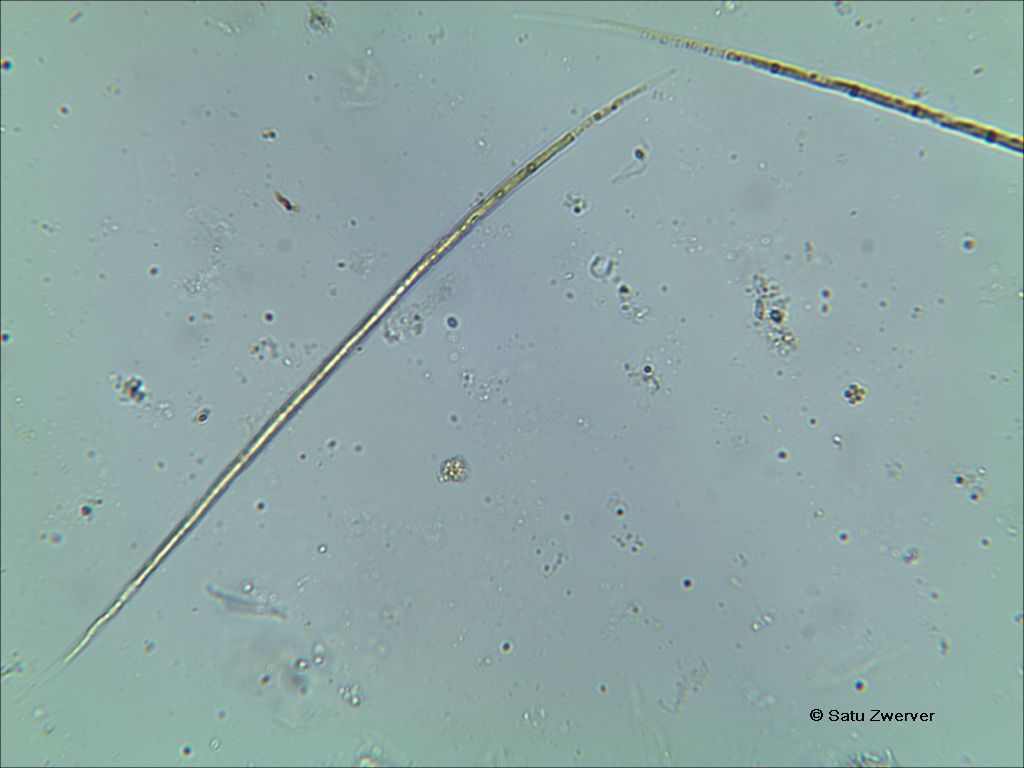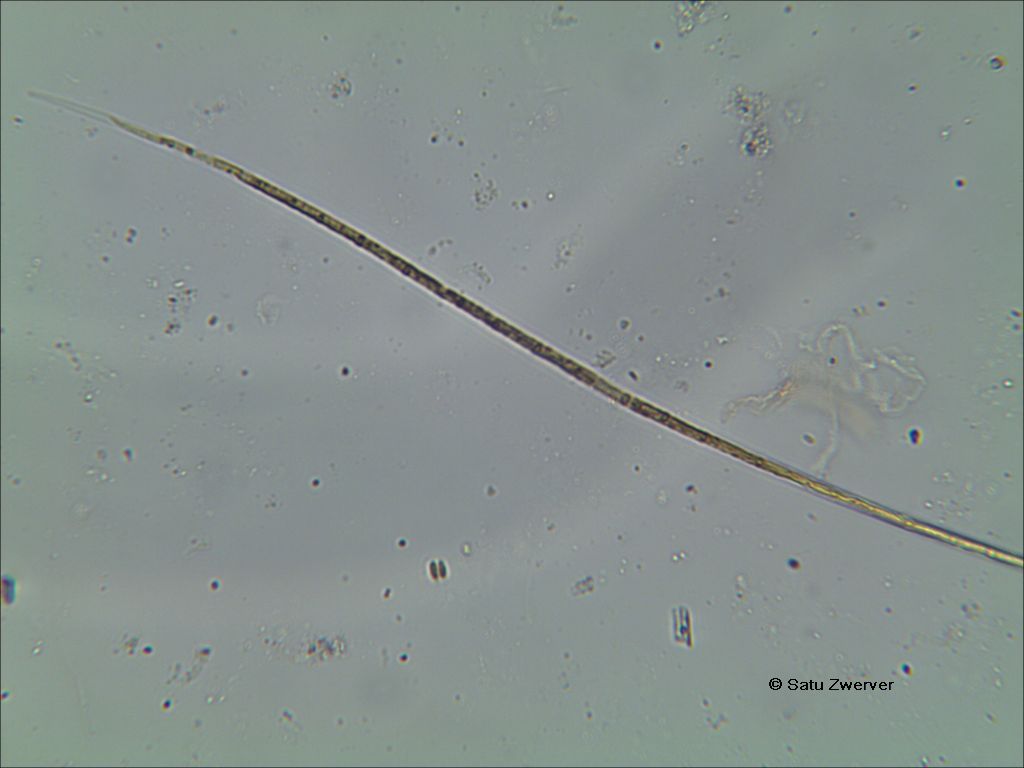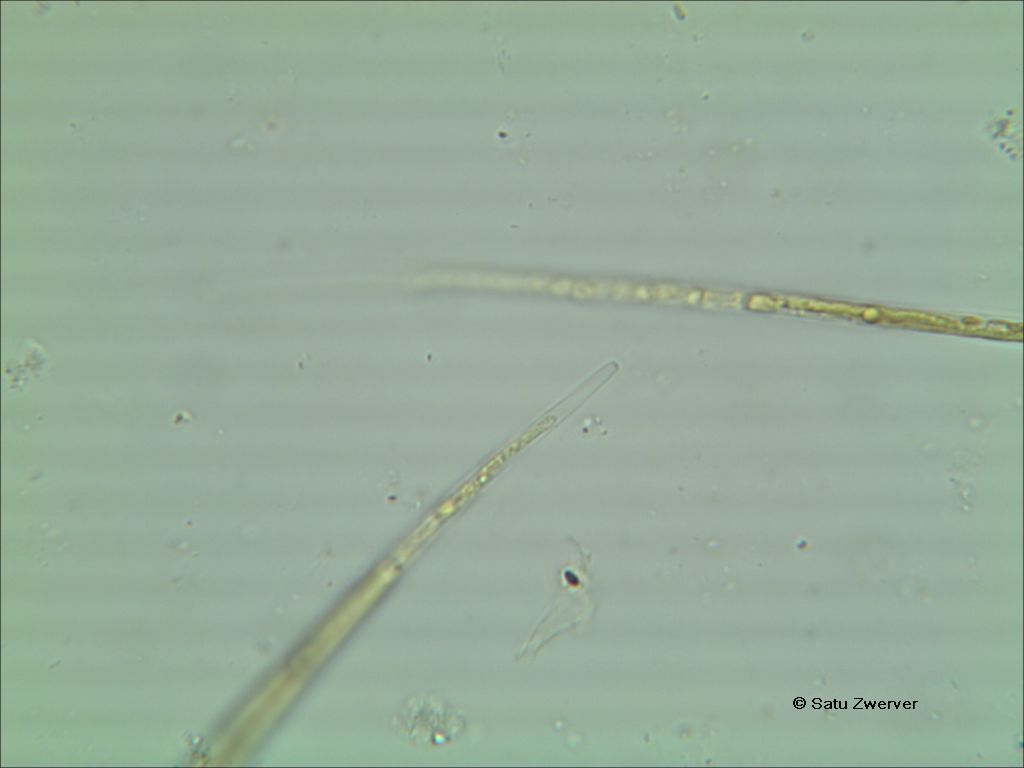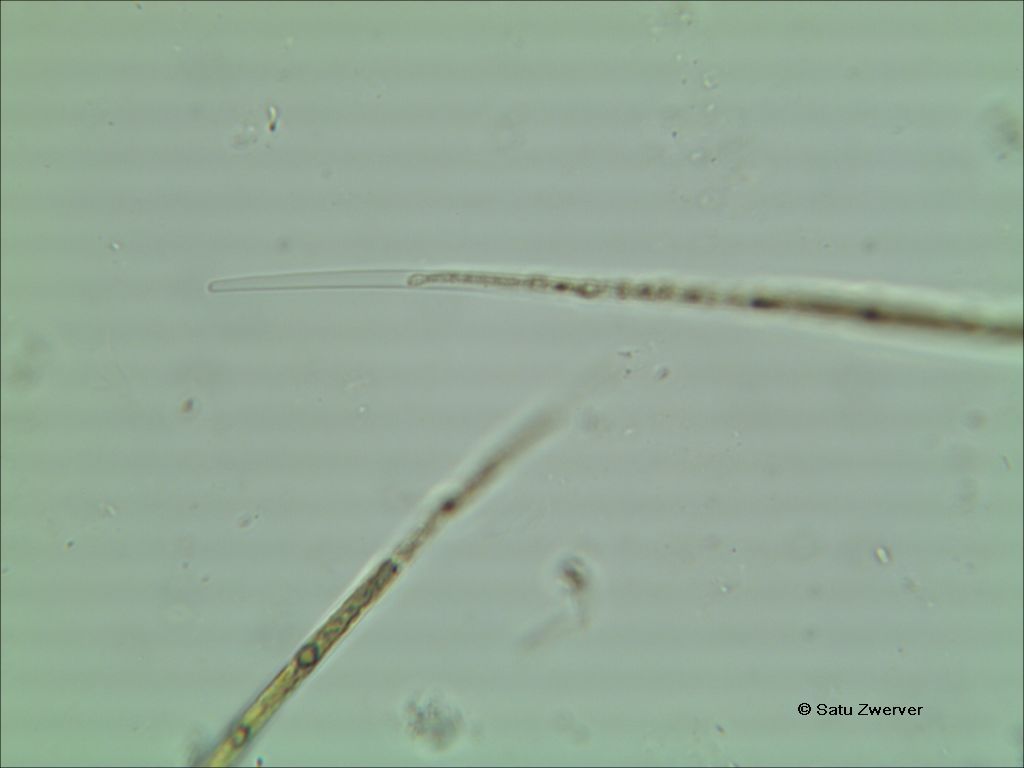Suddenly a whole bunch of Closterium -algae in several water samples. Normally you only see one or two per sample.

And what would it be? It did not fit perfectly anywhere. It resembled very much Closterium aciculare, but both Coesel & Meesters (2007) en Ruzicka (1977) and also John & Williamson (2009) state that the width should be at least 4 µm. These were way under (3-3,9 µm). And very, very slender: 240-390 µm, which made the length/width ratio climb to 70-104.
And it was strangely curvy.

Further more the ends of the cells were not more neither less beak-like, like Coesel & Meesters would like them to be, for aciculare.


But there was a faint end pore.
What to do?
Read more.
Our good old Ruzicka (1977) has written, that the length/width ratio can vary a lot and that W & G.S. West (1894) did describe these extreme long ones as Closterium subpronum , later they made it a variety of Cl. aciculare. Ruzicka finds the differences not convincing and calls them all aciculare. That’s what I’ll do too.
What makes this species even more interesting, is the fact that it needs ammonium as the nitrogen source (Coesel 1991), which explains it’s somewhat different appearence in the nature compared to the rest of it’s genus members: it’s not there in the summer and it prefers neutral to alkaline, eutrophic waters (Ruzicka 1977, Lenzenweger 1996, Coesel & Meesters 2007).
Literature:
Coesel, Peter F.M. 1991. Ammanoium dependency in Closterium aciculare T. West, a planktonic desmid from alkaline, eutrophic waters.
Coesel, Peter F.M. & Meesters, Koos (J.) 2007. Desmids of the Lowlands. Mesotaeniaceae and Desmidiaceae of the European Lowlands. KNNV, Zeist.
Lenzenweger, Rupert 1996. Desmidiaceenflora von Österreich. Teil 1. Bibliotheca Phycologica, Band 101. J. Cramer.
Ruzicka, J. (1977). Die Desmidiaceen Mitteleuropas. Vol. 1(1) pp. [i-]-vi, [2], [1]-291, [292]], pls 1-44. Stuttgart: E. Schweizerbart’sche Verlagsbuchhandlung.
